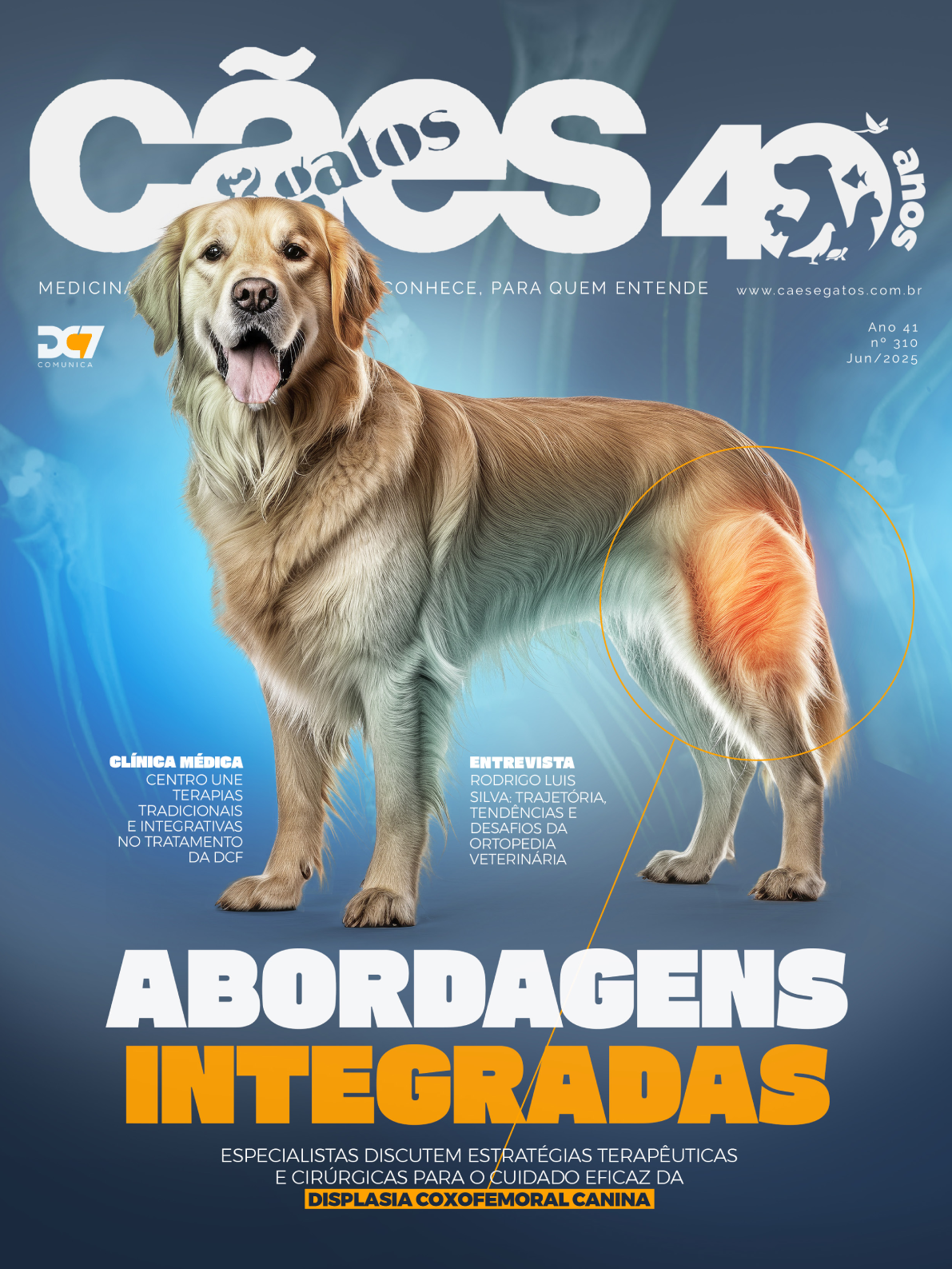As endocrinopatias representam um grupo significativo de desordens endócrinas e metabólicas na clínica de pequenos animais, impactando diretamente na qualidade de vida e na longevidade dos pacientes. Dentre as mais prevalentes em cães, destacam-se o hipotireoidismo e o hipercortisolismo, frequentemente associadas a dislipidemias e resistência insulínica. Essas condições podem ter seus efeitos deletérios minimizados por meio do correto manejo nutricional, tornando a nutrição um pilar essencial no suporte terapêutico desses pacientes (Kil; Swanson, 2010).
Abaixo as referências bibliográficas utilizadas pelas autoras
Referências Bibliográficas
BAUER, J. E. Timely Topics in Nutrition Therapeutic use of fish oils. JAVMA, v. 239, n. 11, p. 1441–1451, 2011.
BAUER, J. E. The essential nature of dietary omega-3 fatty acids in dogs. Journal of the American Veterinary Medical Association, v. 249, n. 11, p. 1267–1272, 2016.
BUGBEE, A.; RUCINSKY, R.; CAZABON, S.; KVITKO-WHITE, H.; LATHAN, P.; NICHELASON, A.; RUDOLPH, L. 2023 AAHA Selected Endocrinopathies of Dogs and Cats Guidelines. Journal of the American Animal Hospital Association, v. 59, n. 3, p. 113–135, 2023.
DAY, M. J. One Health Approach to Preventing Obesity in People and Their Pets. Journal of Comparative Pathology, 2017.
DIXON, M.; REID, S. W. J.; MOONEY, C. T. Epidemiological, clinical, haematological and biochemical characteristics of canine hypothyroidism. Veterinary Record, v. 145, n. 17, p. 481–487, 1999.
FLEEMAN, L.; BARRETT, R. Cushing’s Syndrome and Other Causes of Insulin Resistance in Dogs. Veterinary Clinics of North America – Small Animal Practice, 2023.
JEUSETTE, I. C.; LHOEST, E. T.; ISTASSE, L. P.; DIEZ, M. O. Influence of obesity on plasma lipid and lipoprotein concentrations in dogs. American Journal of Veterinary Research, v. 66, n. 1, p. 81–86, 2005.
KIL, D. Y.; SWANSON, K. S. Endocrinology of Obesity. Veterinary Clinics of North America – Small Animal Practicemar, 2010.
KURYSZKO, J.; SŁAWUTA, P.; SAPIKOWSKI, G. Secretory function of adipose tissue. Polish Journal of Veterinary Sciences, v. 19, n. 2, p. 441–446, 2016.
RYAN, V. H.; TRAYHURN, P.; HUNTER, L.; MORRIS, P. J.; GERMAN, A. J. 11-Hydroxy-β-steroid dehydrogenase gene expression in canine adipose tissue and adipocytes: Stimulation by lipopolysaccharide and tumor necrosis factor α. Domestic Animal Endocrinology, v. 41, n. 3, p. 150–161, 2011.
TILG, H.; MOSCHEN, A. R. Adipocytokines: Mediators linking adipose tissue, inflammation and immunity. Nature Reviews Immunology, v. 6, n. 10, p. 772–783, 2006.
TVARIJONAVICIUTE, A.; CERON, J. J.; HOLDEN, S. L.; CUTHBERTSON, D. J.; BIOURGE, V.; MORRIS, P. J.; GERMAN, A. J. Obesity-related metabolic dysfunction in dogs: a comparison with human metabolic syndrome. BMC Veterinary Research, v. 8, 2012.
VERKEST, K. R. Is the metabolic syndrome a useful clinical concept in dogs? A review of the evidence. Veterinary Journal, 2014.
VERKEST, K. R.; RAND, J. S.; FLEEMAN, L. M.; MORTON, J. M. Spontaneously obese dogs exhibit greater postprandial glucose, triglyceride, and insulin concentrations than lean dogs. Domestic Animal Endocrinology, v. 42, n. 2, p. 103–112, 2012.
XENOULIS, P. G.; STEINER, J. M. Lipid metabolism and hyperlipidemia in dogs. Veterinary Journal, 2010.
ZORAN, D. L. Obesity in Dogs and Cats: A Metabolic and Endocrine Disorder. Veterinary Clinics of North America – Small Animal Practice, 2010.










